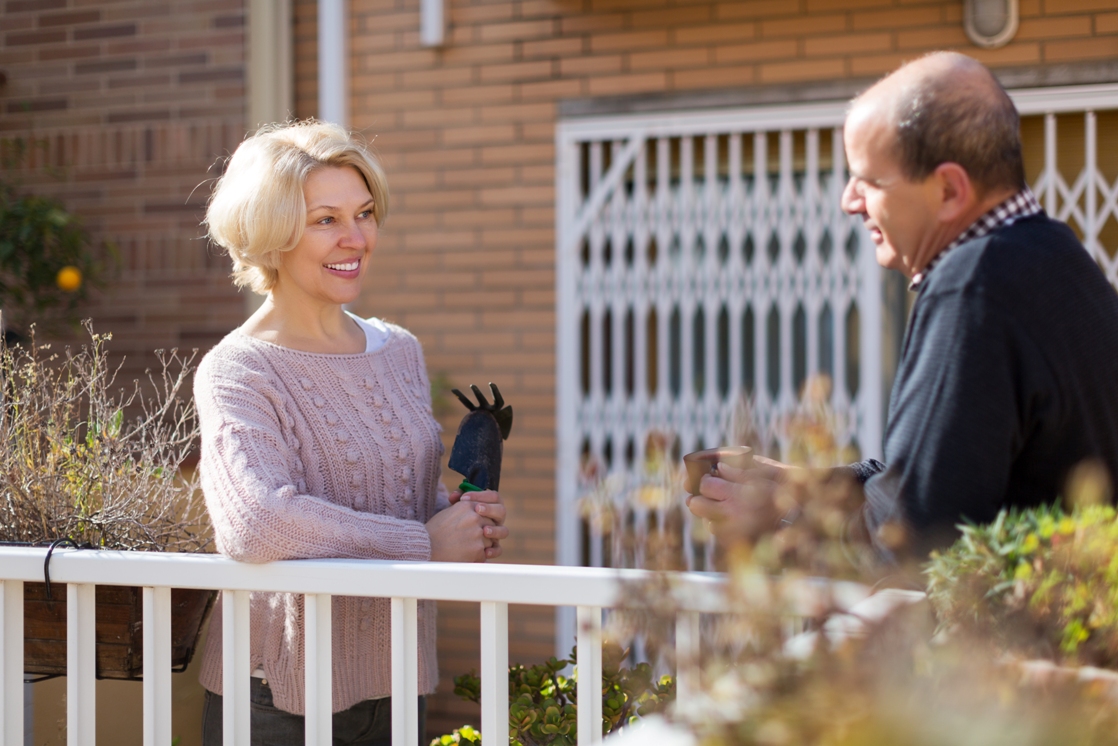Those of us of a “certain age” know exactly what a speaker means when she says, “She’s the ‘Mrs. Kravitz’ of the neighborhood.” For those too young to appreciate the reference, “Mrs. Kravitz” was a character in the sitcom “Bewitched” who was the nosey neighborhood biddy who monitored events through her kitchen window—and then made assumptions about what was happening and stuck her nose into everything (with, of course, comedic results). In the television show, Mrs. Kravitz’s misinterpretations and errant assumptions played out innocently.
Some associations, however, have their own “Mrs. Kravitz”—but her motives in reporting the daily activities to neighbors and property managers may be less innocent. In fact, they may be based on by discriminatory motives that contribute to discord in the neighborhood—or worse, legal action. Behavior or statements motivated by discriminatory beliefs is not only “not neighborly” – it is illegal.
Associations and property managers have the difficult, but necessary, job of discerning what information is relevant and what information is tainted by Mrs. Kravitz’s discriminatory stereotypes and motives.
It’s not difficult to imagine Mrs. Kravitz’s “reports” to the association:
- A “suspicious” young man walking down the sidewalk
- A “funny” smell coming from the home of that “foreign” family down the street
- “Too many people” living in that house on the corner
- Another family of “immigrants” moving in on the next block
- How an association addresses such reports can lead to understanding of cultural diversity – or complaints of discrimination.
Avoiding Discrimination Claims
There are several courses of action an association can take to reduce the chances that a discrimination complaint is leveled against the association. Some are more formal, but some simply engender “neighborliness.”
- Plan social events throughout the year (picnics, potlucks, block parties, etc.) so that residents have an opportunity to get to know one another. Consider having residents share traditions important to their culture or heritage—or even foods important to them, whether that be soda bread (an Irish staple), pad see yew (a Thai noodle dish), cambuulo (a Somali rice and bean dish) or lutefisk (a Norwegian dish of lye-soaked fish).
- If community members are willing, include “spotlight” articles on various residents in newsletters or websites. The articles can provide an opportunity to turn strangers into neighbors, and to identify hobbies or interests neighbors may share.
- Take steps to ensure that everyone is aware that the association does not tolerate discrimination. Include statements to that effect in newsletters, on websites, community bulletin boards, etc.
- Arrange for board members (whether new or seasoned) to attend training sessions on fair housing laws on a regular basis.
- While it may seem overly cautious, avoid colloquialisms that, if taken out of context, could appear discriminatory. For example, in the context of stating it is absolutely clear that the community does not allow certain behavior, saying it is a “black and white issue” raises no red flags. If, however, that statement is taken out of context, the colloquial reference to a “black and white issue” can be misconstrued as discriminatory.
- If a complaint is made about someone’s behavior, investigate the behavior, not the person alleged to have acted inappropriately. If the complaint appears to be motivated by discriminatory stereotypes or assumptions, the association may need to consult with legal counsel to ensure that appropriate action is taken to protect the association while addressing the complaint.
- If someone notifies the association that he believes he is the victim of discrimination by another resident, the association should consult with legal counsel to ensure that prompt and appropriate action is taken to address the allegation and protect the association. Such action may include written confirmation to the complaining party (and to the alleged perpetrator) that the association does not condone or tolerate discriminatory behavior, and that the alleged perpetrator does not represent the association or speak on its behalf.
Responding to a Discrimination Complaint Filed Against the Association
If, despite best efforts, someone alleges discrimination by the association—whether informally, by simply telling the association, or formally, by filing a complaint with the Minnesota Human Rights Commission (MHRC) or the US Housing and Urban Development (HUD) or by suing the association—the association must take the allegations seriously. The association should contact its legal counsel for guidance and contact its directors’ and officers’ liability insurer to advise the insurer of the claim.
No one acting on the association’s behalf should communicate with the investigating entity (e.g., HUD) or respond to any allegations of discrimination without first consulting with legal counsel. In all likelihood, counsel will advise that all communication should be routed through counsel and, if statements are requested, that counsel be present during the investigation interview(s).
While it may seem obvious, no one acting on the association’s behalf should communicate with the person filing the complaint with regard to the allegations made.
No one acting on the association’s behalf should dispose of any potential evidence, including e-mails, letters, phone records, etc. Destroying evidence may result in judgment in favor of the complaining party and may lead to criminal charges if the evidence is relevant to a criminal investigation.
The association should work with legal counsel to determine what information (if any) may be shared with the association members and what information should be provided in Resale Disclosure Certificates.
As is the case with all litigation involving an association, board members must exercise great care to maintain confidentiality regarding information disclosed in the course of that litigation.
As the fabric of America becomes ever more colorful and textured, it is important for associations to be aware of and be sensitive to the differences such color and texture bring to a community. But it is equally important to recognize the similarities of various cultures including, of course, a desire to be good neighbors.
This article originally appeared in Minnesota Community Living magazine and is republished with permission.

